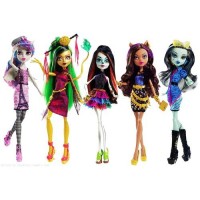One thing this month has brought into sharp relief for me is how much I have to be grateful for.
I have discovered that I am surrounded by people of conscience who will actively challenge hate. Despite all the problems caused by the spread of poor information, the Internet has connected me when I felt isolated and alone.
I am within walking distance of my public library, a privilege that lifts me up, whether I am going there to work on this website, search for recreational reading, hang with my kids, or widen my understanding of the world. It’s a pretty great place, and during the month of October, I got to see democracy in action there, and show it to my kids, as it was an early voting location. People waited for hours to vote, every day. I wish everyone could easily access a library like mine. We all deserve it. Libraries are a cornerstone of democracy. If a major purpose of education is to create informed citizens able to participate effectively in democracy (and I firmly believe that it is) then publicly funded libraries are essential to our society. Where else can we freely access information and literature of all kinds, that opens windows in our minds and wakens us to ideas we’ve never encountered before? More than ever before, we need libraries and librarians, those professionals able to help us sort satire and lies from reliable sources. to help us identify bias and examine our reading critically. “Check your sources”, repeated by English teachers everywhere, has to be our gospel now. Librarians and libraries can show us how.
That we have freedom of information, freedom of the press, is such a gift. It’s one that can so easily slip away without our noticing in the morass of fake information and claims of bias. Corporations would like to end net neutrality and control our access: government would like to see the only news we see come straight from the source. That we live in a country where a free press that keeps our government accountable not only exists but is something to have pride in, is amazing. That it’s a right we have is something we must protect (and that free press needs to be held accountable to accomplishing its mission, too). Our ability to express our outrage over challenges to literature and to question authority is a blessing that I am so grateful to have written into the founding documents of this country.
I am hopeful that we will remain a country of neighbors, reaching out to help each other in times of need. I have benefited from that generosity in my community as I cope with the death of my husband and the grief that accompanies it. I would like to think that the same people who have reached out to me when I have been in distress will also reach out to others outside our community when they see those people in need of help. I believe readers, especially, have a vision of the wider world, and will hold out their hands, and so I’m grateful for readers, and for all of you who have touched the lives of the people around you, near and far… and whether you know me or not, you have made a difference in my life.
I am grateful for a loving family and for my reviewers, some of whom have been such a part of the lives of me and my kids that they are like family themselves. And I will also be grateful if the sherry gravy on my stove right now doesn’t burn while I’m writing this.
Although for many people (including me) this is a difficult time of year, and in this year, for some it is particularly dark, I wish you all blessings in your celebrations, and reasons to find gratitude in your future.
 So, one of the things that we talk about at MonsterLibrarian is the value of using media tie-ins and cross-platform media to get people involved in reading horror fiction. Given the way our world is evolving today, the natural targets for marketers are kids. I watch kids who do a great job integrating existing media characters and stories into completely different scenarios (the Monster Kid’s many stories about the classic mystery solving team of Detective Baby Godzilla and Scooby Doo come to mind) but, frankly, Godzilla and Scooby Doo are small potatoes when it comes to marketing to kids today.
So, one of the things that we talk about at MonsterLibrarian is the value of using media tie-ins and cross-platform media to get people involved in reading horror fiction. Given the way our world is evolving today, the natural targets for marketers are kids. I watch kids who do a great job integrating existing media characters and stories into completely different scenarios (the Monster Kid’s many stories about the classic mystery solving team of Detective Baby Godzilla and Scooby Doo come to mind) but, frankly, Godzilla and Scooby Doo are small potatoes when it comes to marketing to kids today.



Follow Us!